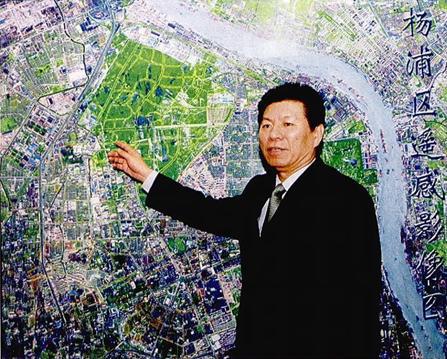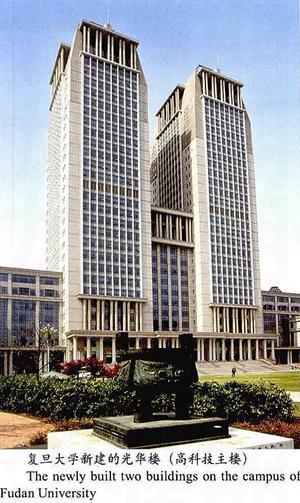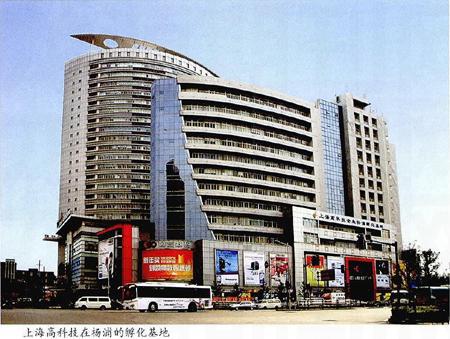Yangpu Undergoes Transformation
By Sun Guowei, our special reporter



I waved goodbye to Yangpu, Shanghai in 1959 when I became a journalist to work overseas for the Peoples Republic. I came to Yangpu with some foreign guests for a brief visit now and then and I was under the impression that Yangpu lagged behind the rest of Shanghai in terms of economic development. Yangpu looked extremely strange after Pudong District began to emerge as a new focus of the citys momentous modernization drive. The Yangpu Bridge told a vivid story about the heartening takeoff on one side and the seemingly helpless stagnation on the other. The skyscrapers in Zhangjiang High-Tech Industrial Zone stood in sharp contrast to the dilapidated factories in Yangpu.
My latest visit to Yangpu has changed my impressions. I have seen a new Yangpu. What has happened?
The transformation Yangpu needed seemed a mission impossible at first. It was a big headache for district planners. It used to be the industrial center of the old Shanghai. It is home to the oldest universities in Shanghai. And it used to have the oldest and best city utilities of Shanghai. From the first paper-making machinery factory in the late Qing Dynasty onward, Yangpu once was the best manufacturing center in China. In the 1980s, the district was still home to 1,200 large-scale state-owned enterprises with more than 600,000 employees. In the 1990s, however, as other districts witnessed exponential growth, Yangpu staggered with its heavy burden of the past. The 60-km2 district was the largest city district. Of the 1.3 million registered residents, 130,000 were unemployed or without regular income. And there were nearly 60,000 on the roster of various social aids. The number of enterprises dropped drastically from 1,200 to about 200 and the employees dropped to 200,000. The economic downturn not only frustrated the residents in the district, but also affected the living conditions.
For about 10 years, the district leadership tried in vain to find a way out. The old downtown reconstruction is not a challenge only Yangpu faced. It is an international problem. In April, 2004, Shanghai made up its mind about Yangpus future: Knowledge-based innovation would be its tomorrow.
Yangpus blueprint for the future focuses on the 14 universities and colleges in the district. The first big move was to relocate 1,300 households from the area around these higher education institutions. With the 300-million relocation completed, twelve high-tech zones have emerged, including 9 national ones. One of them is the Tongji Design Park, which is now home to hundreds of high-tech businesses. Over the past 6 years, the parks have served as high-tech incubators. The enterprises have radiated out to the whole city and the Yangtze River Delta. The booming knowledge-based growth has also offered a great number of job opportunities to local residents. The knowledge-based economy of Yangpu yielded an output value of 10 billion in 2008. The output value will have been 30 billion by 2015.
Today, the district and education institutions have joined hands to develop Yangpu. There are now more than 160 schools engaged in non-full-time education undertakings. It has now grown into Chinas largest design industry center. Before the knowledge-based industry came into being, Yangpus revenue was 1.6 billion yuan.
Another focus in Yangpus reconstruction is real estate development. Wujiaochang in Jiangwan used to be an area largely off limits for military purposes. With discussions with the military authorities, a large part of the land has now been turned to win-win real estate developments. Wujiaochang has been turned into an area for knowledge-based enterprises, residential communities, leisure and sports. The real estate developments have provided space for top-class companies.
Development projects have poured capital into large-scale relocation projects. Over the past five years, 820,000-m2 old residential communities have been dismantled and 26,000 households have been relocated. The subways and rail transportation network have come into the district.
Yangpu is now home to three exchange houses under the UNPD Special Unit for South-South Cooperation. The Shanghai Environment and Energy Exchange started operation on June 5th, 2008. The technology equity exchange has settled down in Yangpu. The exchange house has set up 17 workstations in 16 developing countries and 30-40 more are to be built in 2009. Yangpu regards this as a concrete step toward the globalization of Shanghai.□

